In the landscape of global economic development, Japan and Singapore represent two of Asia’s most remarkable success stories, albeit with starkly different approaches. Japan, with its industrial might and technological innovation, transformed from post-war devastation into the world’s third-largest economy. Singapore, a tiny resource-poor island, evolved from a colonial port into a global financial hub with one of the highest per capita GDPs worldwide. This comprehensive analysis examines both development models across ten critical dimensions to determine which offers more adaptable, sustainable, or replicable strategies for nations seeking economic advancement in today’s complex global environment.
Foundational Development Pathways
Left: Japan’s post-WWII industrial reconstruction (1950s). Right: Singapore’s early development after independence (1960s).
Japan: Phoenix from the Ashes
Japan’s modern economic miracle began amid the ruins of World War II. With industrial production at just 10% of pre-war levels in 1945, the country faced near-complete devastation. The American occupation (1945-1952) catalyzed fundamental reforms that laid groundwork for future growth:
- Dissolution of zaibatsu (industrial conglomerates) to promote competition
- Land reform that redistributed property from landlords to farmers
- Constitutional reforms establishing democratic institutions
- Approximately $2.2 billion in U.S. aid through the Marshall Plan
Under Prime Minister Hayato Ikeda’s “Income Doubling Plan” (1960), Japan embraced export-oriented industrialization. The Ministry of International Trade and Industry (MITI) coordinated strategic investments in key sectors, while the Bank of Japan provided favorable financing. This government-business partnership, known as “Japan Inc.,” drove annual GDP growth rates exceeding 10% between 1960-1970.
Singapore: From Third World to First
Singapore’s development journey began with its painful separation from Malaysia in 1965. Under Prime Minister Lee Kuan Yew’s leadership, the resource-poor island with no natural hinterland faced existential challenges:
- Unemployment exceeding 14% following British military withdrawal
- Housing shortages with over 70% living in slums
- Limited industrial base and domestic market
- Ethnic tensions following race riots in 1964
Singapore’s leadership adopted a pragmatic, state-directed development approach. The Economic Development Board (EDB), established in 1961, aggressively courted foreign direct investment while the government invested heavily in infrastructure and public housing. Unlike Japan’s focus on domestic companies, Singapore embraced multinational corporations as engines of growth, offering tax incentives, industrial estates, and political stability.
| Development Factor | Japan | Singapore |
| Initial Catalyst | U.S. Occupation Reforms | Independence Crisis |
| Key Policy Approach | Industrial Policy (MITI) | FDI Attraction (EDB) |
| Resource Base | Limited natural resources, large population | Virtually no natural resources, small population |
| Growth Model | Export-oriented industrialization | Global trade and services hub |
| Political System | Parliamentary democracy | Parliamentary republic (dominant-party) |
Core Economic Sectors and National Strategy
Japan’s manufacturing excellence (left) contrasted with Singapore’s financial services sector (right).
Japan: Manufacturing Excellence and Keiretsu Networks
Japan’s economic miracle was built on manufacturing prowess, particularly in automobiles, electronics, and precision machinery. Several distinctive features characterized Japan’s industrial strategy:
- Keiretsu System: Following the dissolution of zaibatsu, new business groups (keiretsu) emerged centered around major banks, facilitating patient capital and long-term planning
- Quality Revolution: Adoption of Total Quality Management principles pioneered by W. Edwards Deming transformed Japanese manufacturing
- Just-in-Time Production: Toyota’s kanban system minimized inventory costs while maximizing efficiency
- Lifetime Employment: Stable workforce enabled investment in worker training and fostered company loyalty
The Ministry of International Trade and Industry (MITI) played a crucial coordinating role, identifying strategic industries, channeling resources, and protecting nascent sectors until they became internationally competitive. By the 1980s, Japan had become the world’s second-largest economy, with companies like Toyota, Sony, and Panasonic becoming global household names.
Singapore: Global Services Hub and State Capitalism
Singapore pursued a fundamentally different economic strategy, leveraging its strategic location and colonial legacy as a trading port to become a global services hub:
- Financial Services: Developed as an international banking center and wealth management hub
- Logistics and Transportation: Built world-class port and airport infrastructure
- State-Owned Enterprises: Government-linked companies (GLCs) like Singapore Airlines and DBS Bank became regional leaders
- Sovereign Wealth Funds: Temasek Holdings and GIC manage over $700 billion in assets globally
Singapore’s development strategy evolved through distinct phases: labor-intensive manufacturing (1960s-70s), skill-intensive industries (1980s-90s), and knowledge-intensive services (2000s-present). The Economic Development Board maintained a forward-looking approach, continuously repositioning the economy toward higher-value activities as labor costs increased.
Innovation, R&D, and Technology Adoption
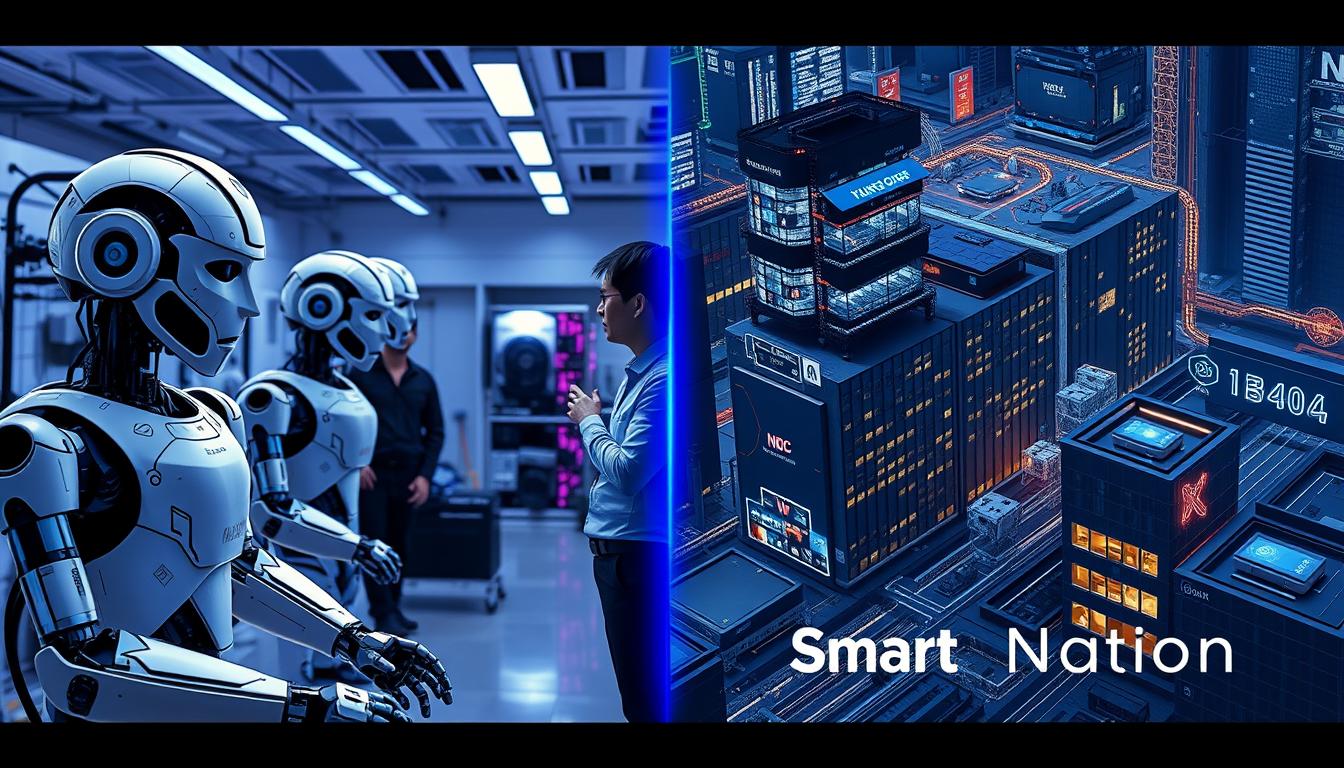
Japan’s robotics innovation (left) compared to Singapore’s Smart Nation digital infrastructure (right).
Japan: Corporate R&D Powerhouse
Japan’s innovation model has historically been characterized by large corporate R&D investments, particularly in manufacturing technologies:
- R&D spending consistently exceeds 3% of GDP (3.26% in 2020, OECD data)
- Strong patent output with over 300,000 patent applications annually
- Corporate-led innovation with companies like Toyota, Sony, and Fanuc driving advances
- Excellence in robotics, automotive technology, and materials science
Japan pioneered the concept of concurrent engineering, where design and manufacturing teams work together from early development stages. This approach, combined with kaizen (continuous improvement) philosophy, enabled Japanese companies to achieve remarkable quality and efficiency improvements. However, Japan has faced challenges in recent decades:
Japan’s Innovation Strengths
- Deep technical expertise in manufacturing processes
- Strong industry-university collaboration in applied research
- Global leadership in robotics and automation
- High-quality patent output with practical applications
Japan’s Innovation Challenges
- Declining startup ecosystem (only 4.5% entrepreneurship rate)
- Risk-averse corporate culture limiting disruptive innovation
- Slower digital transformation compared to global peers
- Aging researcher population with demographic challenges
Singapore: Agile Innovation Ecosystem
Singapore has developed a highly coordinated national innovation system that combines government direction with private sector dynamism:
- R&D spending reached 1.89% of GDP in 2020, with a target of 3% by 2025
- Research, Innovation and Enterprise (RIE) 2025 plan allocates S$25 billion to strategic technologies
- Smart Nation Initiative coordinates digital transformation across public and private sectors
- Strong focus on applied research with commercial applications
Singapore has successfully positioned itself as Southeast Asia’s innovation hub, attracting regional headquarters of major technology companies and nurturing a growing startup ecosystem. The city-state has developed particular strengths in fintech, biomedical sciences, and urban solutions:
Singapore’s Innovation Strengths
- Agile regulatory environment with regulatory sandboxes
- Strong venture capital ecosystem (S$5.5 billion invested in 2021)
- Effective public-private innovation partnerships
- Strategic focus on emerging technologies (AI, blockchain)
Singapore’s Innovation Challenges
- Limited domestic market for scaling innovations
- Heavy reliance on foreign talent for technical expertise
- Risk of over-direction through government planning
- Fewer fundamental research breakthroughs
| Innovation Metric | Japan | Singapore |
| R&D Spending (% of GDP, 2020) | 3.26% | 1.89% |
| Global Innovation Index Rank (2022) | 13th | 7th |
| Patents per Million Population | 2,574 | 1,341 |
| Startup Ecosystem Ranking (2022) | Tokyo: 15th | Singapore: 8th |
| Digital Competitiveness Rank (IMD, 2022) | 29th | 4th |
Education Systems and Talent Cultivation
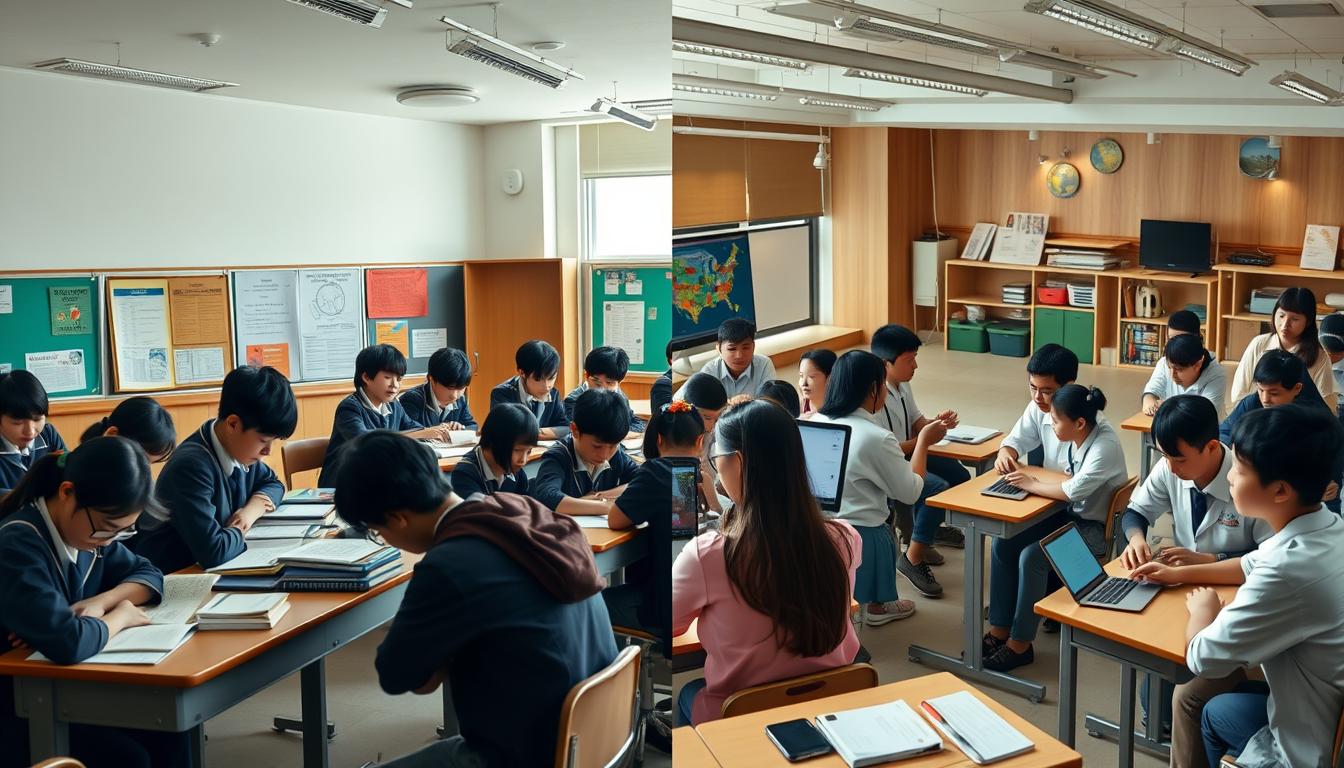
Japan’s structured education system (left) compared to Singapore’s globally-oriented approach (right).
Japan: Excellence Through Discipline
Japan’s education system has long been admired for producing highly literate, numerate graduates with strong work ethics. Key features include:
- Near-universal literacy rate (99%) and high school completion (98%)
- Strong emphasis on mathematics and science fundamentals
- Structured curriculum with standardized national content
- Moral education (tokubetsu katsudo) emphasizing character development
The Japanese education model places significant emphasis on effort over innate ability, instilling perseverance (gaman) and attention to detail. The university entrance examination system (juken) creates intense competition, with many students attending supplementary cram schools (juku) to improve their chances of admission to prestigious institutions.
In vocational education, Japan has developed a sophisticated system combining classroom learning with practical training. Large companies often provide extensive in-house training programs for new graduates, investing in long-term skill development rather than expecting immediate productivity.
Singapore: Global-Ready Talent
Singapore has engineered its education system to produce globally competitive talent while maintaining strong national identity:
- Consistently top-ranked in PISA international assessments
- Bilingual policy requiring proficiency in English and mother tongue
- Streaming system identifying different aptitudes (recently reformed)
- Strong emphasis on STEM education and digital literacy
Singapore’s education philosophy has evolved from survival-driven (1960s-70s) to efficiency-driven (1980s-90s) to ability-driven (2000s-present). The current “Teach Less, Learn More” approach emphasizes critical thinking and creativity over rote memorization, though the system remains highly structured and assessment-oriented.
Beyond formal education, Singapore has pioneered lifelong learning through its SkillsFuture initiative, providing citizens with credits for continuing education and training. This program helps workers adapt to changing economic needs and supports mid-career transitions.
Japan’s Education System
Strengths: Strong fundamentals in mathematics and science, high completion rates, disciplined learning environment, effective vocational training.
Challenges: Emphasis on memorization over critical thinking, high-pressure examination system, slower adoption of English proficiency, less diversity in educational approaches.
Singapore’s Education System
Strengths: World-leading PISA scores, bilingual proficiency, strong STEM focus, effective teacher training, adaptability to economic needs.
Challenges: High-pressure environment, potential over-emphasis on testing, concerns about student well-being, questions about creativity development.
| Education Metric | Japan | Singapore |
| PISA Mathematics Ranking (2018) | 6th | 2nd |
| PISA Science Ranking (2018) | 5th | 1st |
| PISA Reading Ranking (2018) | 15th | 2nd |
| Universities in Top 100 Global Rankings | 2 | 2 |
| Adult Literacy Rate | 99% | 97.1% |
| Education Spending (% of GDP) | 3.1% | 2.9% |
Urban Planning and Infrastructure Efficiency
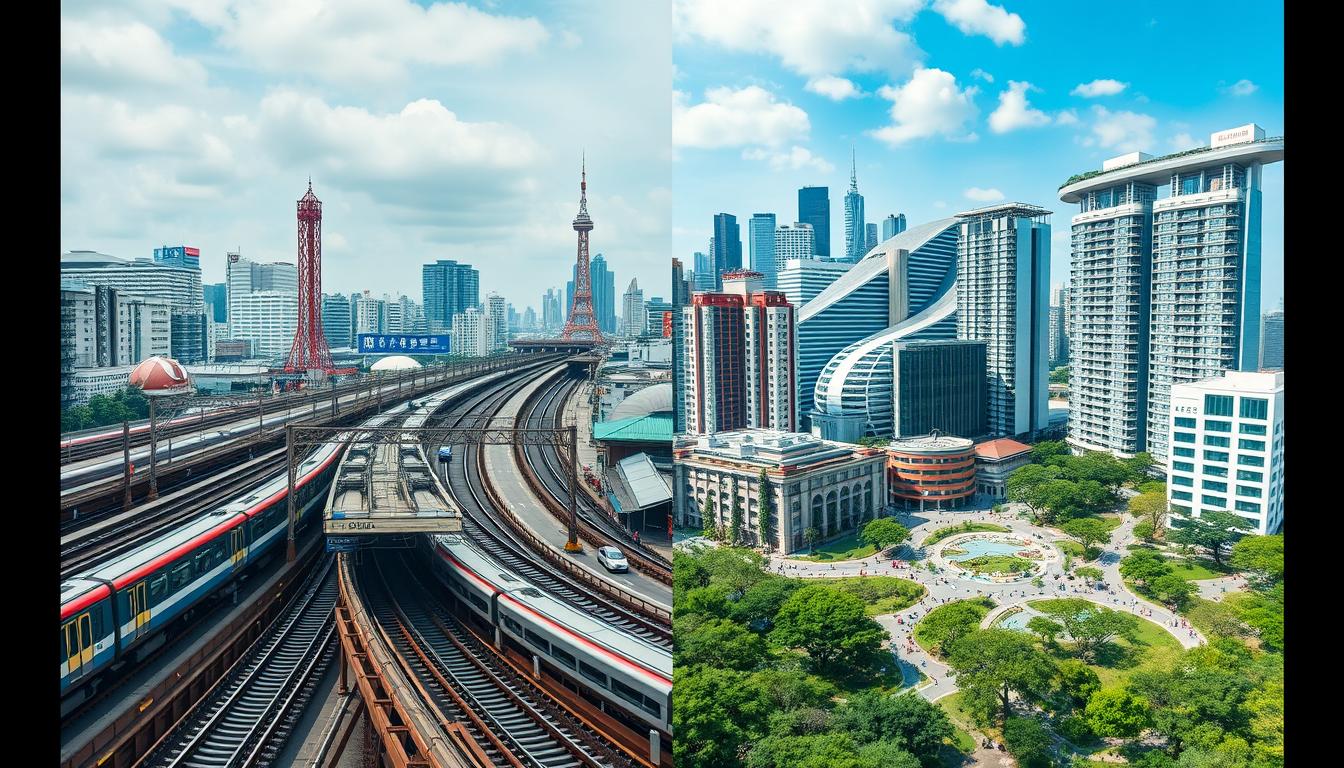
Tokyo’s extensive transit network (left) compared to Singapore’s integrated urban planning (right).
Japan: Transit-Oriented Development
Japan’s approach to urban planning has been shaped by geographic constraints and high population density, particularly in metropolitan areas:
- World-class public transportation systems centered around railways
- Transit-oriented development integrating stations with commercial facilities
- Compact cities with mixed-use neighborhoods
- Efficient use of limited space through innovative building designs
Tokyo’s railway system exemplifies Japan’s infrastructure excellence, moving over 40 million passengers daily with remarkable punctuality (average delay under one minute). Private railway operators like Tokyo Metro, JR East, and Tokyu have developed integrated business models combining transportation with real estate development, retail, and services.
Japan’s post-war housing policy focused on quantity during rapid urbanization, with the Japan Housing Corporation (now Urban Renaissance Agency) developing large-scale housing estates. More recently, urban regeneration projects have revitalized aging city centers, with Roppongi Hills in Tokyo representing a successful example of mixed-use redevelopment.
Singapore: Master-Planned City-State
As a city-state with extreme land constraints, Singapore has developed one of the world’s most comprehensive urban planning systems:
- Long-term Concept Plans guiding development over 40-50 year horizons
- Public housing program (HDB) accommodating over 80% of residents
- Integrated transportation planning with emphasis on public transit
- Active land creation through reclamation (Singapore’s land area has increased by 25% since independence)
The Urban Redevelopment Authority (URA) coordinates Singapore’s physical development through detailed Master Plans. The Housing Development Board (HDB) has transformed Singapore from a city of slums to one where homeownership exceeds 90%. Public housing estates are carefully planned with ethnic quotas to prevent segregation and include commercial facilities, schools, and community centers.
Singapore pioneered congestion pricing with its Electronic Road Pricing system and maintains strict vehicle quotas through the Certificate of Entitlement system. These measures, combined with investments in Mass Rapid Transit (MRT) and bus systems, have created an efficient transportation network despite space limitations.
Japan’s Urban Infrastructure Highlights
- Tokyo’s railway network: 158 lines, 882 stations
- Shinkansen bullet train network connecting major cities
- Earthquake-resistant building technologies
- Underground utility tunnels (common utility ducts)
- Sophisticated disaster management systems
Singapore’s Urban Infrastructure Highlights
- Comprehensive water management (Four National Taps strategy)
- Changi Airport: consistently ranked world’s best
- Port of Singapore: second-busiest container port globally
- Integrated “Smart Nation” digital infrastructure
- Biophilic design integrating greenery throughout the city
| Urban Planning Metric | Japan (Tokyo) | Singapore |
| Population Density | 6,158 people/km² | 8,358 people/km² |
| Public Transport Modal Share | 51% | 44% |
| Green Space Per Capita | 4.5 m² | 66.2 m² |
| Public Housing Percentage | 4.6% | 80.7% |
| Infrastructure Quality Ranking (WEF) | 5th | 1st |
Governance, Regulation, and Ease of Doing Business
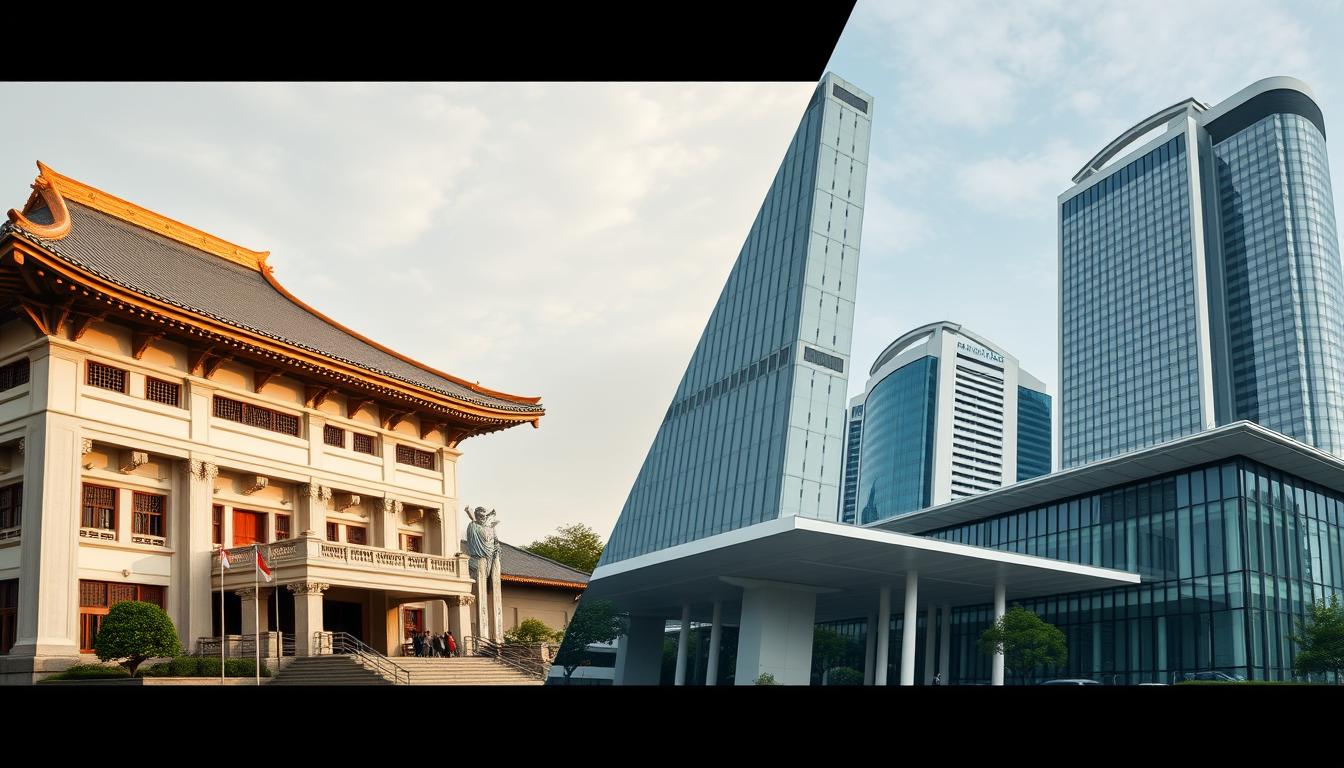
Japan’s consensus-based governance (left) compared to Singapore’s efficient technocratic approach (right).
Japan: Consensus-Based Governance
Japan’s governance model combines democratic institutions with a strong bureaucracy and close business-government coordination:
- Professional civil service with elite bureaucrats from top universities
- Emphasis on consensus-building (nemawashi) in decision-making
- Regulatory guidance through administrative circulars and informal consultation
- Strong rule of law with independent judiciary
The Japanese bureaucracy, particularly the Ministry of Economy, Trade and Industry (METI, formerly MITI) and the Ministry of Finance, has played a central role in economic development. Policy formulation typically involves extensive consultation with industry associations and other stakeholders, creating stability but sometimes slowing decision-making.
Japan’s regulatory approach has traditionally relied on administrative guidance (gyōsei shidō) rather than strict legal enforcement. This flexible approach facilitated rapid industrialization but has faced criticism for lack of transparency and potential for favoritism. Recent reforms have aimed to increase regulatory clarity and reduce administrative discretion.
Singapore: Efficient Technocracy
Singapore has developed a distinctive governance model often described as “authoritarian technocracy” or “pragmatic meritocracy”:
- Elite civil service with competitive recruitment and performance-based advancement
- Technocratic approach emphasizing practical results over ideology
- Strong anti-corruption measures with high public sector integrity
- Centralized, long-term planning with efficient implementation
Singapore’s governance is characterized by pragmatism and adaptability. The Economic Development Board exemplifies this approach, functioning as both policymaker and investment promotion agency with flexibility to respond quickly to changing economic conditions. The civil service attracts top talent through competitive compensation and prestigious career paths.
Regulatory efficiency is a hallmark of Singapore’s business environment. The city-state consistently ranks among the easiest places to do business globally, with streamlined processes for company formation, construction permitting, and contract enforcement. Digital government initiatives have further enhanced service delivery and reduced administrative burdens.
| Governance Metric | Japan | Singapore |
| Ease of Doing Business Rank (World Bank, 2020) | 29th | 2nd |
| Corruption Perceptions Index (2021) | 18th | 4th |
| Government Effectiveness (World Bank) | 90.9 percentile | 100.0 percentile |
| Regulatory Quality (World Bank) | 84.1 percentile | 100.0 percentile |
| E-Government Development Index (UN, 2020) | 14th | 11th |
Japan’s Governance Strengths
- Democratic legitimacy with peaceful power transitions
- Strong legal protections for intellectual property
- Stable policy environment with predictable changes
- Effective local government with decentralized services
Japan’s Governance Challenges
- Bureaucratic rigidity slowing decision-making
- Complex regulatory environment with implicit rules
- Slower digital government transformation
- Fiscal challenges with high public debt (over 200% of GDP)
Singapore’s Governance Strengths
- Exceptional public administration efficiency
- Strategic long-term planning capability
- Effective anti-corruption mechanisms
- Responsive regulatory environment for business
Singapore’s Governance Challenges
- Limited political pluralism with dominant-party system
- Restrictions on press freedom and civil liberties
- Risk of groupthink in policy development
- Questions about long-term political succession
Environmental Sustainability and Green Growth
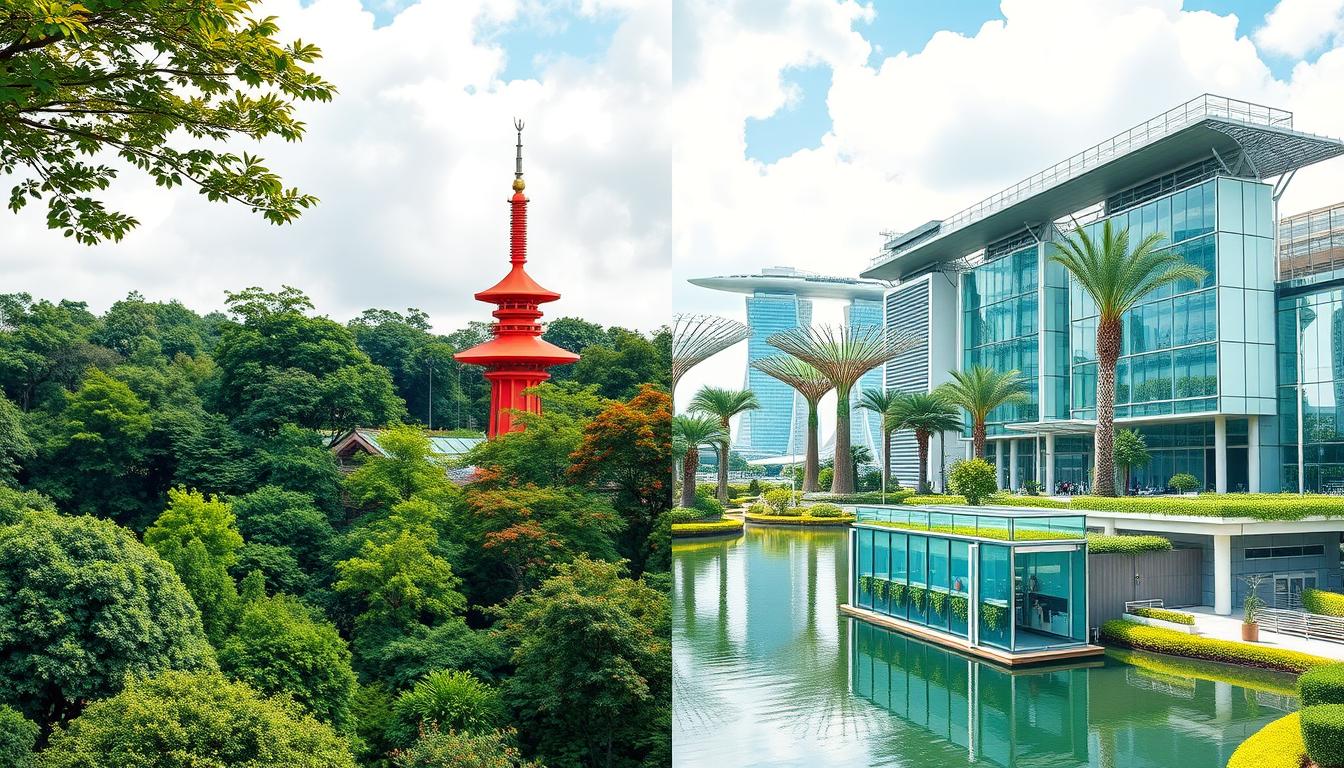
Japan’s renewable energy initiatives (left) compared to Singapore’s engineered sustainability solutions (right).
Japan: From Pollution Crisis to Green Innovation
Japan’s environmental journey reflects its evolution from industrial pollution challenges to leadership in clean technologies:
- Overcame severe industrial pollution of the 1960s-70s through strict regulations
- Pioneered energy efficiency improvements following 1970s oil shocks
- Developed world-leading hybrid vehicle technology and fuel-efficient manufacturing
- Committed to carbon neutrality by 2050 with Green Growth Strategy
Japan’s experience with pollution-related health crises (Minamata disease, Yokkaichi asthma) led to comprehensive environmental legislation in the 1970s. The country subsequently developed advanced pollution control technologies that became export industries. Energy conservation became a national priority following the oil shocks, with Japan achieving the highest energy efficiency among major economies.
However, Japan faces significant challenges in its energy transition. The Fukushima nuclear disaster in 2011 led to the shutdown of most nuclear plants, increasing fossil fuel dependency. Renewable energy expansion has been constrained by geographic limitations and grid integration challenges, though recent policies aim to accelerate deployment.
Singapore: Engineering Environmental Solutions
As a land-scarce island nation, Singapore has developed innovative approaches to environmental sustainability:
- Pioneering water management with NEWater recycling and desalination
- Extensive greenery integration through Gardens by the Bay and park connectors
- Green building mandates with 80% of buildings to be green-certified by 2030
- Singapore Green Plan 2030 targeting carbon intensity reduction
Water security represents Singapore’s most remarkable environmental achievement. The “Four National Taps” strategy—local catchment, imported water, NEWater (recycled wastewater), and desalination—has transformed a strategic vulnerability into a showcase of innovation. NEWater now meets 40% of Singapore’s water needs with ultra-clean recycled water.
Despite space constraints, Singapore has increased green cover from 36% to 47% since independence through careful planning and innovative approaches like vertical gardens and green roofs. The city-state has also implemented early congestion pricing and vehicle quotas to manage transportation emissions.
| Environmental Metric | Japan | Singapore |
| CO₂ Emissions per Capita (tons) | 8.7 | 8.4 |
| Renewable Energy (% of electricity) | 18.5% | 2.8% |
| Environmental Performance Index Rank (2022) | 25th | 49th |
| Waste Recycling Rate | 20.2% | 52% |
| Green Space (% of land area) | 68.5% | 47% |
Japan’s Environmental Strengths
- Advanced pollution control technologies
- World-leading energy efficiency in manufacturing
- Extensive forest cover (68.5% of land area)
- Strong public transportation reducing emissions
Japan’s Environmental Challenges
- High fossil fuel dependency post-Fukushima
- Aging infrastructure requiring renewal
- Limited renewable energy growth
- Declining rural environmental management
Singapore’s Environmental Strengths
- World-leading water management innovation
- Efficient urban planning minimizing footprint
- Effective waste management with high recycling
- Innovative green building technologies
Singapore’s Environmental Challenges
- Limited renewable energy potential
- High dependency on imported resources
- Vulnerability to climate change impacts
- Biodiversity pressures from development
Global Trade and Geopolitical Influence
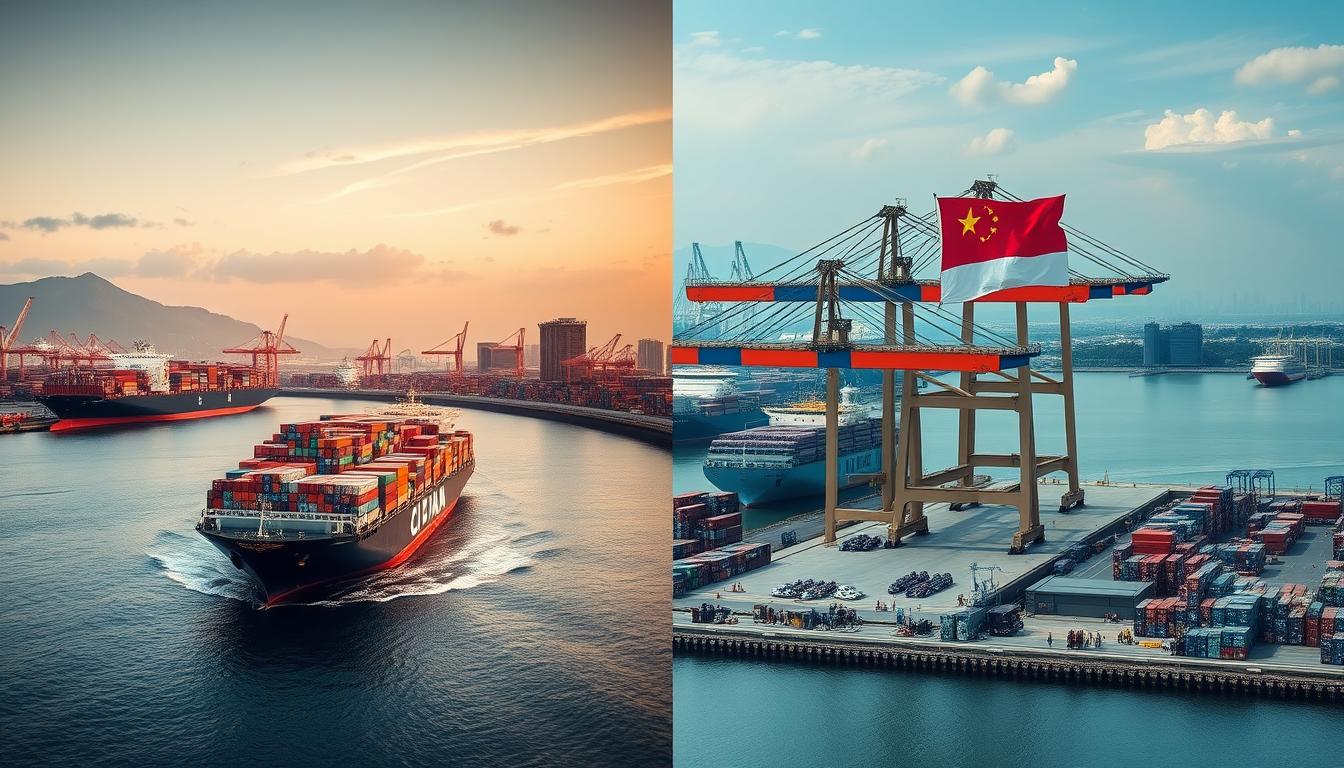
Japan’s G7 diplomacy and global manufacturing networks (left) compared to Singapore’s strategic hub positioning (right).
Japan: Economic Superpower with Soft Power Focus
Japan has evolved from post-war isolation to become a major player in global economic governance:
- G7 member with significant influence in global economic coordination
- World’s fourth-largest exporter with global manufacturing networks
- Major provider of Official Development Assistance (ODA), particularly in Asia
- Proponent of rules-based international economic order
Japan’s trade strategy has evolved from export-led growth to establishing global production networks. Japanese manufacturers maintain sophisticated supply chains across Asia, with particularly deep integration in Thailand, Vietnam, and Indonesia. Following the U.S. withdrawal from the Trans-Pacific Partnership, Japan took leadership in establishing the Comprehensive and Progressive Agreement for Trans-Pacific Partnership (CPTPP).
Japan’s diplomatic approach emphasizes economic relationships, development assistance, and cultural soft power rather than military projection. The country has been a major contributor to international institutions like the World Bank, IMF, and Asian Development Bank. Recent years have seen more proactive diplomacy under the “Free and Open Indo-Pacific” concept, partly in response to China’s growing influence.
Singapore: Strategic Hub with Outsized Influence
Despite its small size, Singapore has developed remarkable global influence through strategic positioning:
- ASEAN’s most economically advanced member with diplomatic influence
- Extensive free trade agreement network covering over 60% of global GDP
- Major financial center and arbitration hub for Asia
- Strategic balancing between major powers while maintaining independence
Singapore’s trade strategy emphasizes openness and connectivity. The city-state has aggressively pursued free trade agreements, including early deals with major economies like the United States, China, and the European Union. Singapore was a founding member of the CPTPP and Regional Comprehensive Economic Partnership (RCEP), reflecting its commitment to trade liberalization.
Singapore’s diplomatic approach is characterized by pragmatism and balance. While maintaining a strong security relationship with the United States, Singapore has also cultivated close economic ties with China. The country punches above its weight in international forums through strategic expertise and reputation for impartial analysis, with leaders often invited to share the “Singapore model” with developing nations.
| Trade & Diplomacy Metric | Japan | Singapore |
| Exports (2021) | $756 billion | $408 billion |
| Trade as % of GDP | 36.6% | 322% |
| Free Trade Agreements | 21 | 27 |
| Foreign Direct Investment Stock | $238 billion | $1.87 trillion |
| Diplomatic Missions Abroad | 247 | 50 |
Japan’s Global Position
Economic Diplomacy: Major provider of development assistance, infrastructure financing, and technical cooperation, particularly in Southeast Asia.
Trade Strategy: Focus on high-value manufacturing exports, intellectual property protection, and global supply chain management.
Strategic Alliances: Strong security alliance with the United States while maintaining economic engagement with China.
Singapore’s Global Position
Economic Diplomacy: Positioning as neutral meeting ground, financial gateway to Asia, and model of development for emerging economies.
Trade Strategy: Extensive free trade agreement network, positioning as services and logistics hub, and strategic entrepôt.
Strategic Alliances: Careful balancing between major powers while maintaining strategic autonomy and ASEAN centrality.
Resilience to Global Crises and Future Outlook

Japan’s Society 5.0 vision (left) compared to Singapore’s digital economy transformation (right).
Japan: Resilience Through Systems and Society
Japan’s approach to crisis resilience reflects its experience with natural disasters and economic challenges:
- World-leading disaster preparedness and response systems
- Strong social cohesion supporting community-based resilience
- Industrial diversification reducing vulnerability to sector-specific shocks
- “Society 5.0” vision for technology-human integration
Japan’s experience with the 2011 Great East Japan Earthquake demonstrated both strengths and weaknesses in crisis management. While the immediate earthquake and tsunami response showed remarkable societal resilience, the Fukushima nuclear disaster revealed governance failures. Subsequent reforms have strengthened emergency management systems and critical infrastructure protection.
During the COVID-19 pandemic, Japan achieved relatively low mortality rates despite an aging population, with strong public health compliance and universal healthcare access. However, the crisis exposed digital infrastructure gaps, with difficulties in remote work implementation and digital service delivery.
Looking forward, Japan’s “Society 5.0” initiative aims to address demographic challenges through technological innovation. The strategy focuses on robotics, AI, and IoT to maintain productivity with a shrinking workforce while improving quality of life for an aging population.
Singapore: Adaptability as Competitive Advantage
Singapore’s approach to resilience emphasizes adaptability, diversification, and forward planning:
- Strategic scenario planning through government futures offices
- Economic diversification reducing vulnerability to sector-specific downturns
- Substantial fiscal reserves providing crisis response capacity
- Digital Economy Framework for post-pandemic transformation
Singapore’s response to the Asian Financial Crisis (1997-98) and Global Financial Crisis (2008-09) demonstrated economic resilience through counter-cyclical fiscal policy and labor market flexibility. The government maintained long-term investments while providing targeted support to affected sectors and workers.
During the COVID-19 pandemic, Singapore initially struggled with outbreaks in migrant worker dormitories but subsequently developed effective containment measures and achieved high vaccination rates. The crisis accelerated digital transformation, with rapid adoption of e-payments, telehealth, and remote work infrastructure.
Looking forward, Singapore’s post-pandemic strategy focuses on positioning for new growth areas including digital economy, green finance, advanced manufacturing, and biomedical sciences. The “30 by 30” food security initiative aims to produce 30% of nutritional needs domestically by 2030, reducing import dependency.
| Resilience Metric | Japan | Singapore |
| COVID-19 Deaths per Million | 246 | 269 |
| Economic Recovery (2021 GDP Growth) | 1.6% | 7.6% |
| Digital Adoption Index (World Bank) | 0.83 | 0.87 |
| Fiscal Reserves (% of GDP) | N/A (high debt) | ~300% |
| Food Self-Sufficiency Ratio | 38% | 10% |
Japan’s Future Outlook
Demographic Challenge: Population projected to decline from 126 million to 88 million by 2065, with 38% over age 65.
Technology Focus: Robotics, AI, and automation to maintain productivity with smaller workforce.
Economic Transition: Shift toward higher-value services, healthcare innovation, and sustainable technologies.
Singapore’s Future Outlook
Demographic Challenge: Aging population with total fertility rate of 1.14, well below replacement level.
Technology Focus: Digital economy, fintech innovation, and smart city technologies.
Economic Transition: Development as innovation hub, green finance center, and advanced manufacturing base.
Conclusion: Complementary Models with Distinct Advantages
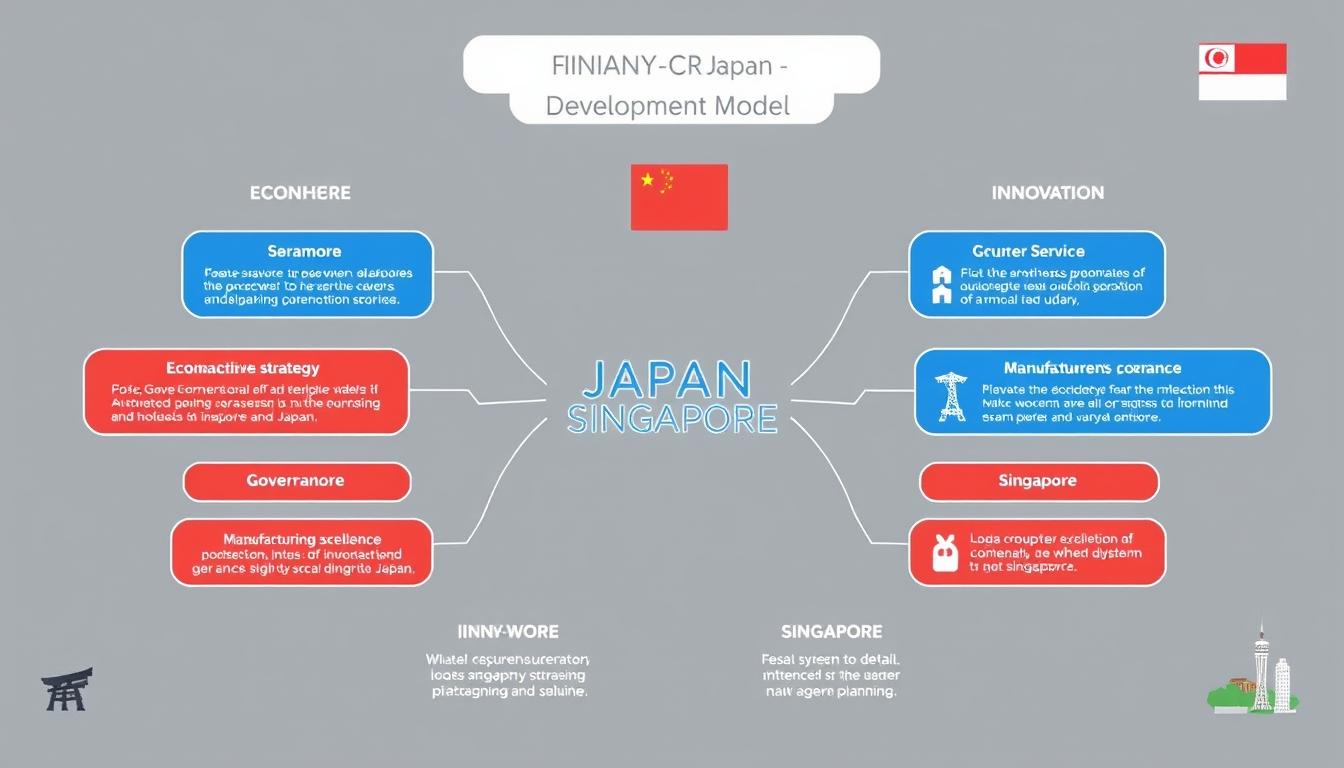
Key differences and complementary strengths in the Japan vs Singapore development models.
The comparative analysis of Japan and Singapore reveals not a single “smarter” development model, but rather two distinctive approaches with complementary strengths suited to different contexts. Each country’s development path reflects unique historical circumstances, geographic realities, and cultural factors that make direct replication challenging. However, both offer valuable lessons for policymakers worldwide.
Japan’s Model: Depth, Scale, and Societal Balance
Japan’s development model demonstrates the power of industrial depth, technological mastery, and social cohesion. Key transferable lessons include:
- Long-term industrial policy can nurture globally competitive sectors when combined with market discipline
- Investment in education and workforce development creates foundation for industrial excellence
- Universal social protections can support economic transformation while maintaining cohesion
- Environmental challenges can be transformed into technological opportunities
However, Japan’s experience also highlights potential pitfalls: institutional rigidity can impede adaptation to changing conditions, consensus-based decision-making may slow responses to crises, and demographic imbalances can threaten long-term sustainability.
Singapore’s Model: Agility, Pragmatism, and Strategic Vision
Singapore’s development model showcases the potential of strategic adaptability, governance efficiency, and global connectivity. Key transferable lessons include:
- Resource constraints can be overcome through human capital development and strategic positioning
- Effective governance and corruption control create foundation for sustainable growth
- Forward-looking economic planning can anticipate global trends and position accordingly
- Balancing self-reliance with targeted support can create sustainable social systems
However, Singapore’s approach has limitations: its small size enables governance models that may not scale to larger countries, its strategic location provided natural advantages, and its political model raises questions about balancing efficiency with pluralism.
Synthesis: Toward Adaptive Development Models
Rather than choosing between these models, policymakers might consider how elements of each can address specific development challenges:
When Japan’s Model Offers Advantages
- Building industrial depth and technological capabilities
- Developing comprehensive social safety nets
- Creating resilient infrastructure and disaster management systems
- Nurturing manufacturing excellence and quality control
When Singapore’s Model Offers Advantages
- Creating efficient regulatory environments
- Positioning within global trade and investment flows
- Developing strategic economic niches
- Building administrative capacity and policy implementation
The most successful development strategies will likely combine elements from multiple models while adapting to local conditions. Both Japan and Singapore continue to evolve their approaches in response to emerging challenges, demonstrating that development is not a destination but an ongoing process of adaptation and renewal.
As countries navigate an increasingly complex global environment characterized by technological disruption, climate change, and geopolitical realignment, the ability to learn from diverse development experiences while crafting locally appropriate strategies will be essential for sustainable prosperity.
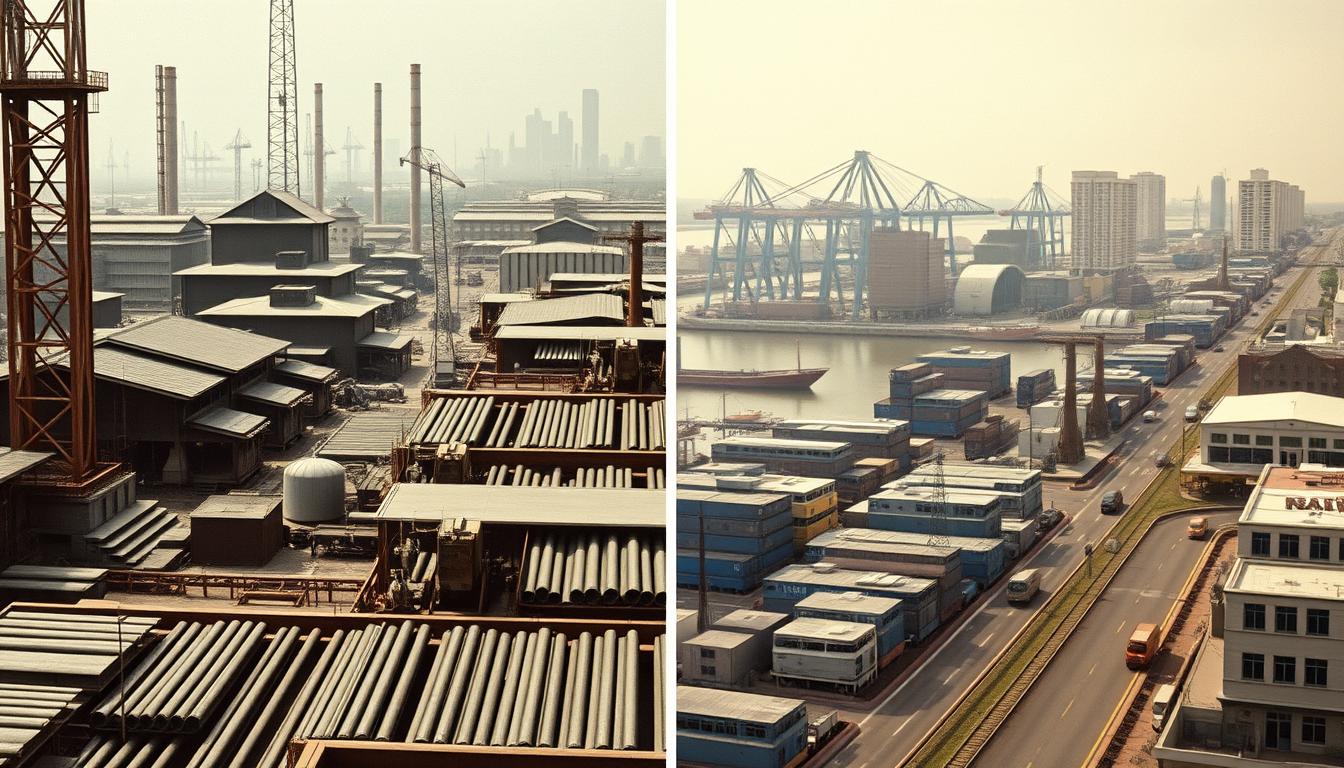



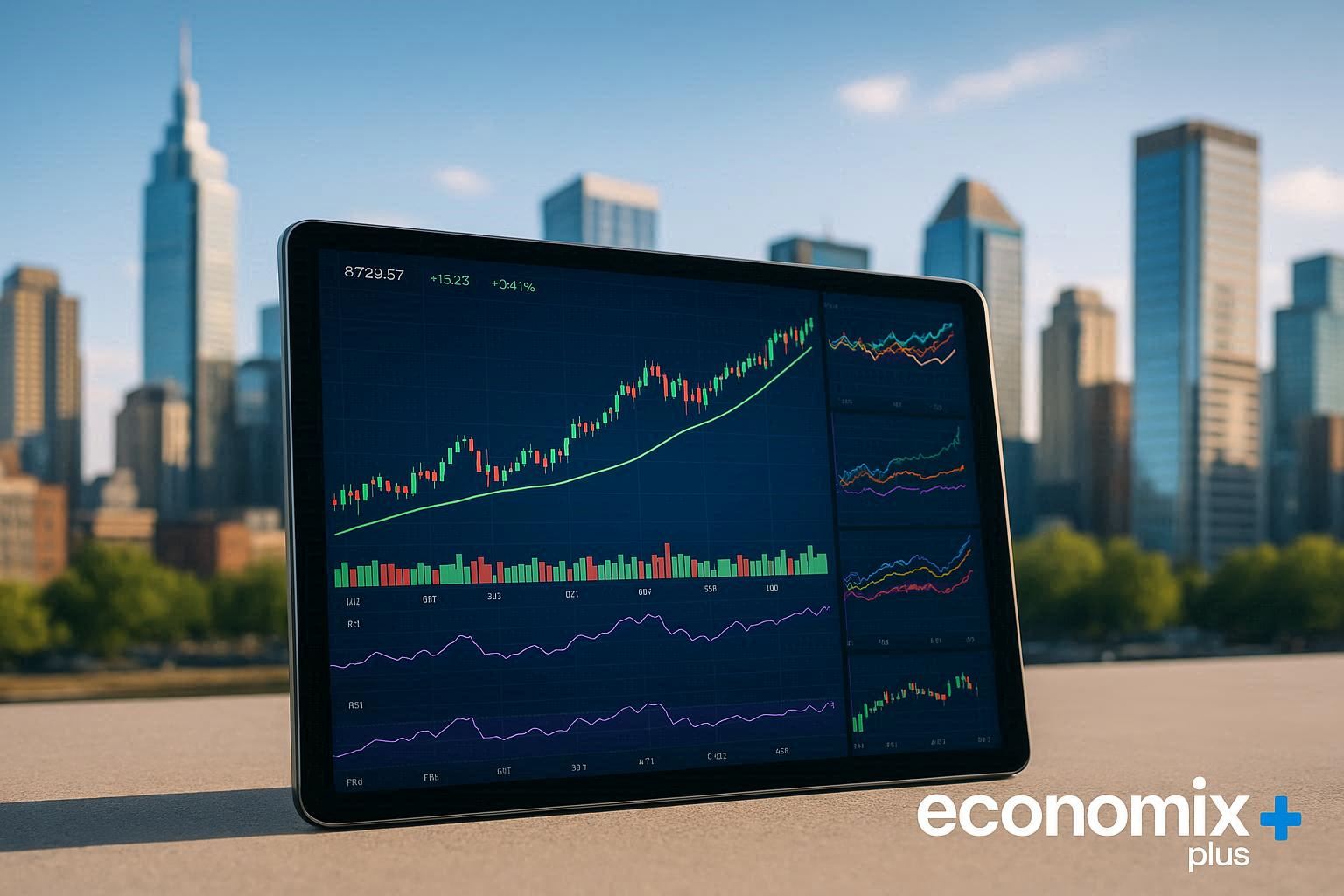
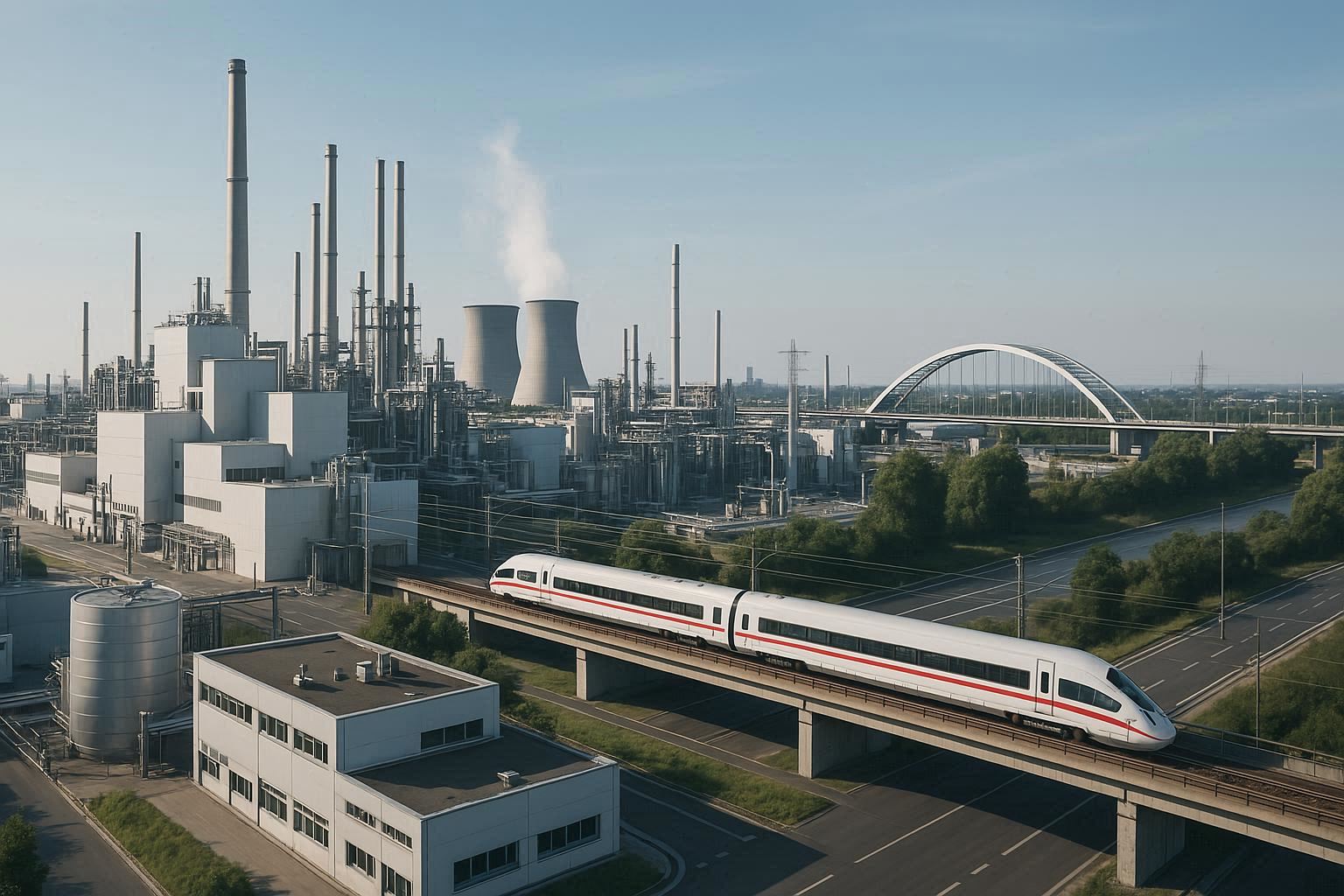



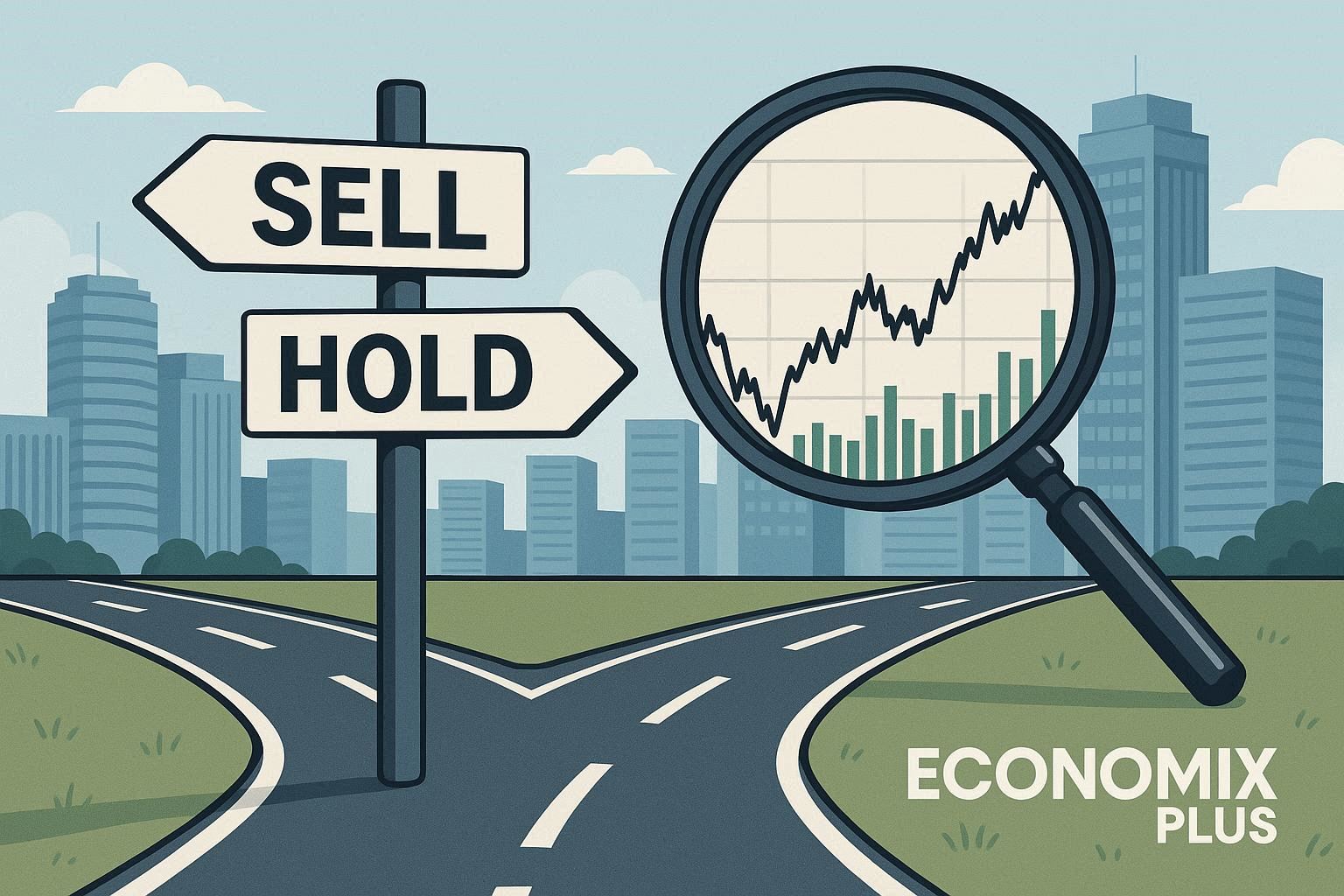




Social Stability, Public Services, and Quality of Life
Japan’s universal healthcare system (left) compared to Singapore’s Medisave approach (right).
Japan: Universal Welfare with Aging Challenges
Japan has developed a comprehensive social welfare system that provides universal healthcare, pension benefits, and social services:
Japan’s healthcare system delivers excellent outcomes, with the world’s highest life expectancy (84.7 years) and low infant mortality (1.9 per 1,000 live births). The system emphasizes preventive care and regular health check-ups, with easy access to specialists and advanced medical technology.
However, Japan faces significant demographic challenges with the world’s oldest population. The proportion of citizens aged 65 and above reached 28.7% in 2021 and is projected to exceed 35% by 2040. This aging trend places enormous pressure on pension and healthcare systems, with social security spending now accounting for one-third of the national budget.
Singapore: Self-Reliance with Safety Nets
Singapore has developed a distinctive approach to social policy based on principles of individual responsibility with targeted support:
Singapore’s healthcare system delivers strong outcomes at lower cost than many developed countries (4.9% of GDP vs. OECD average of 8.8%). The “3M” framework—Medisave (mandatory savings), MediShield Life (catastrophic insurance), and Medifund (safety net for the poorest)—combines individual responsibility with targeted subsidies.
Singapore’s public housing program has created stable neighborhoods with high homeownership rates (90.4%) across ethnic groups. Housing estates are designed with amenities, transportation access, and ethnic integration quotas to prevent segregation. Recent policies have addressed affordability concerns for younger generations amid rising property values.
Japan’s Social Policy Approach
Philosophy: Universal coverage with shared social responsibility
Strengths: Comprehensive safety nets, excellent healthcare outcomes, strong social cohesion, low inequality
Challenges: Fiscal sustainability amid aging population, rigid labor markets, gender inequality in workforce participation
Singapore’s Social Policy Approach
Philosophy: Self-reliance with targeted support (“Many helping hands”)
Strengths: Fiscal sustainability, high homeownership, efficient healthcare delivery, employment-centered welfare
Challenges: Higher inequality, potential gaps in safety nets, stress on family support systems, work-life balance